I left the launch ramp at Marysville at the peak of a midwinter high tide when flood had slowed the downstream current in Ebey Slough to a crawl. I put the outboard in neutral and eyed the swing bridge that spanned the slough a few dozen yards downstream. From my eye level, all I could see of the bottom of the bridge was a thin dark line, but that was enough. The high water left me just enough room to motor BONZO, a 19′6″ Escargot canal boat that my son had built, under the railroad’s 111-year-old swing bridge. I didn’t have to crouch to keep from hitting my head on the black, rivet-blistered steel plates, but it was good that I hadn’t put the stovepipe in place; it would have been knocked off.The parallel concrete bridges another 100 yards downstream stood high above the slough, carrying the north- and southbound lanes of an interstate highway. The guardrails masked the cars from view, and I could see only an intermittent stream of boxy trailers hauled by semis, but the hum of engines and hiss of tires on pavement was constant. As I left the bridges behind, distance muffled the rush of traffic until it began to sound like wind-driven rain. At the mouth of Ebey Slough I took advantage of a light breeze to sail the last 1-1/2 miles to the line of wrecks where I'd spend the night.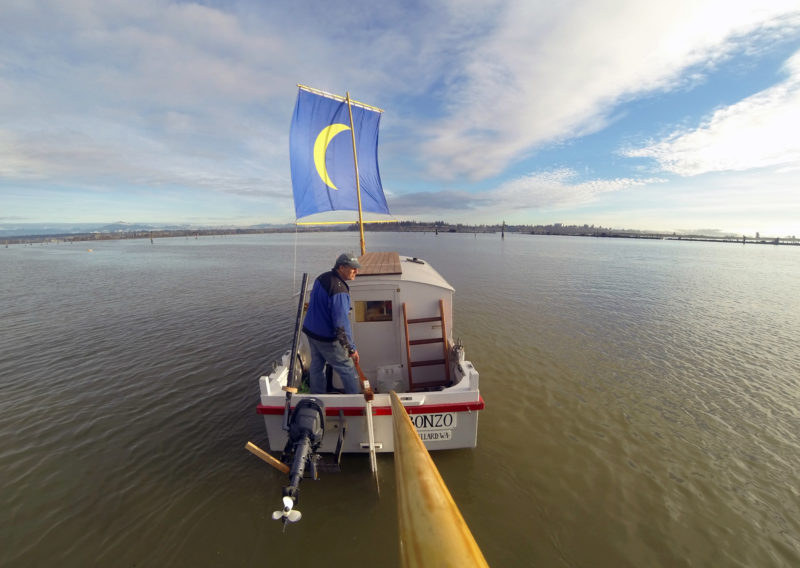 Photographs and video by the author
Photographs and video by the author
Join The Conversation
We welcome your comments about this article. To include a photo with your remarks, click Choose File below the Comment box.


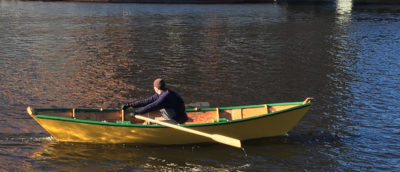

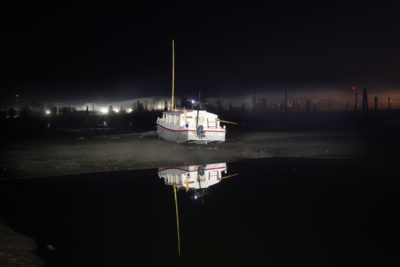
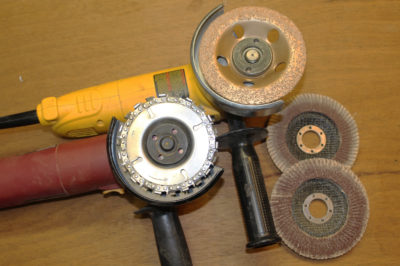
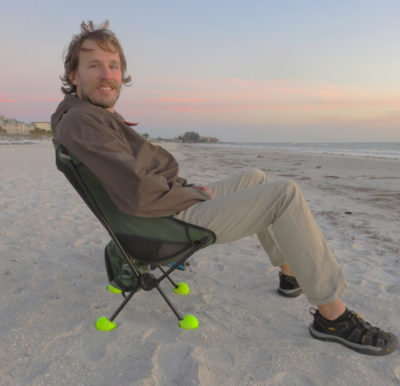

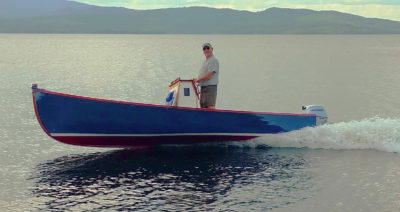
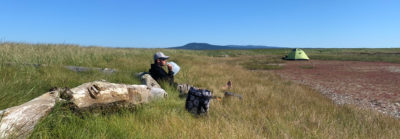
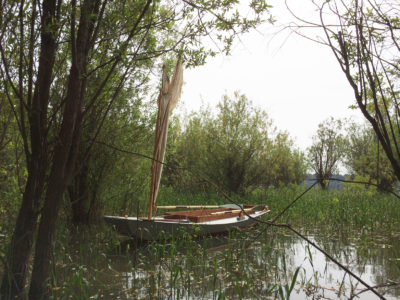

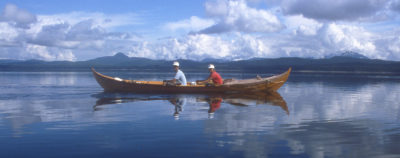
Very nice trip. I was seeing some of those sloughs a couple of weeks ago when I took a road trip up the Skagit to see the eagles.
I thought of taking my SCAMP, NODDY, on such a voyage, mast down most of the time and using oars or my Torqeedo. You’ve given me new insight and inspiration.
Thanks
A wonderful solo messabout! Has me in mind of Ransome’s book Secret Water. Well done, and thank you for sharing.
Hi, Chris. An awesome trip, it made me feel as if I was in the boat with you enjoying the solitude of the occasion. It so reminded me of being brought up on the salt marshes and tributaries on the coast of Northeast Massachusetts. At 14 years old I had cut the metal roof out of an abandoned 1946 Chevy, rolled its edges, nailed and tarred in boards on the ends to add a stern and bow. A soda box to sit on and a pole and paddle then would turn the miles of salt marsh into my oyster, as we would say. At high runner tides I could go for miles and as the tides went down I was forced to the creeks and rivers. Thanks for bringing back the memories.
Great article, Chris. It makes me want to get back out on the water, except for that pesky 25-degree temp and 20-mph wind. I felt your pain with the anchor. I use a beautiful stainless-steel anchor my father-in-law gave me a few years ago before he passed away. Its obviously irreplaceable. I’ve thought about getting a cheap one to use on the boat and just display the SS one.
Curt White
Another Proud Escargot Owner
A lot of anchors, the one I lost included, have a hole or an eye on the shank down close to the fluke end. Having never lost an anchor before, I didn’t pay much attention to that feature. It’s an attachment point for a tripping line. When I replace my stainless-steel anchor—or get it back from someone collecting the reward—I’ll put a shackle in that hole and attach a line that has a float on its other end. Pulling that line instead of the rode will back the anchor out of a jam.
Good article. Never having been in your part of the country, I was able to see it just by reading the story. I look forward to reading more.
Chris, I have explored that area a little bit. The Northwest Steam Society does a cruise once a year in the Snohomish River and down Steamboat Slough where we raft up for lunch. Excursions into the cut in Otter Island is the high point of the trip, conjuring up images of the AFRICAN QUEEN and Humphrey Bogart as Charlie Allnut. The derelict boats/ships in Steamboat are truly amazing: “Somebody actually lives on that?”
Chris, as an interested antipodean (Australian) I was looking up the location of your voyage on Google Earth and observed the wrecks in Possession Sound. I had recently seen a TV program about an ill-fated scheme to build a fleet of wooden cargo steamers to ferry freight to Europe when the USA entered World War 1 in 1917 and since 6 or 7 of the wrecks appear identical (about 270′ x 45′ scaled) I did some more research and am of the opinion that these are indeed some of these ships. Apparently the majority were built to a “Ferris” design, which seems to match the scaled dimensions. A large number were scuttled and burned to the waterline at Mallows Bay in the Potomac River, Maryland. These are known as the “Ghost fleet of Mallows Bay” and are now a nature reserve. A bit of useless trivia. Thanks for your always interesting stories.